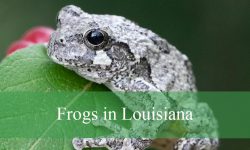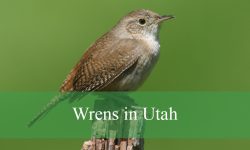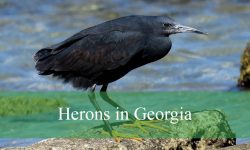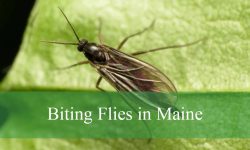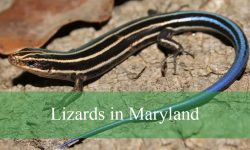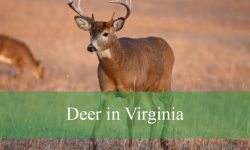White birds have long been admired for their beauty and elegance, embodying the qualities of purity, peace, and grace. Their pristine, snow-white feathers stand out in contrast to the natural landscapes they inhabit, making them a sight to behold in the wild.
Whether soaring high in the sky or gliding peacefully across a calm lake, white birds capture the imagination of bird watchers and nature lovers alike. These birds are often associated with calmness, serenity, and even spiritual symbolism, further adding to their allure.
In this article, we will explore 47 different types of white birds, offering detailed identification tips and images to help you easily spot and recognize these majestic creatures. If you are fascinated by the beauty of white birds or wish to learn more about them, this guide will be an invaluable resource.
Different Types of White Birds
Tundra Swan
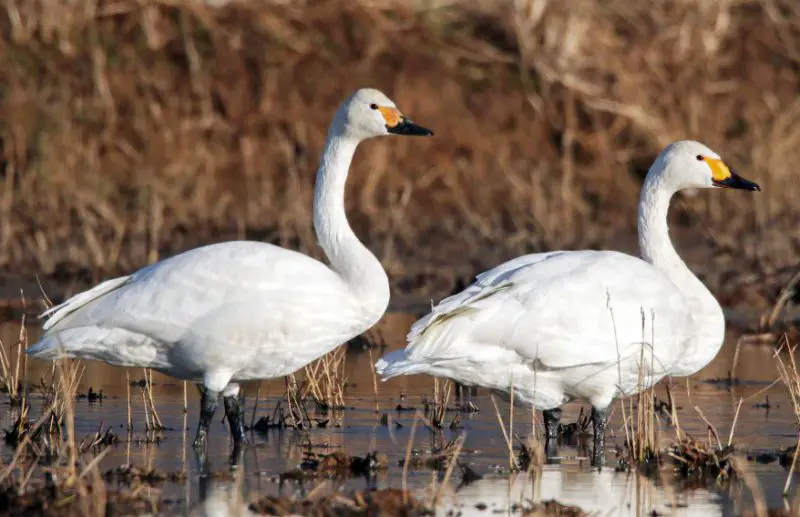
Tundra Swans (Cygnus columbianus) are large white birds known for their dual-colored beaks, which can be yellow and black or orange and black. They are slightly smaller than Trumpeter Swans and have a more rounded head. They feed on aquatic plants, grasses, and occasionally small invertebrates. They can reach underwater plants by dipping their long necks below the surface.
Tundra Swans breed in the Arctic tundra of Northern Canada and Alaska. During winter, they migrate to the Pacific and Atlantic coastlines of North America. They are highly migratory birds, traveling long distances between breeding and wintering grounds. They are commonly seen flying in V-shaped formations. Tundra Swans prefer shallow wetlands, estuaries, and coastal marshes, where they can easily find aquatic vegetation.
Snowy Owl
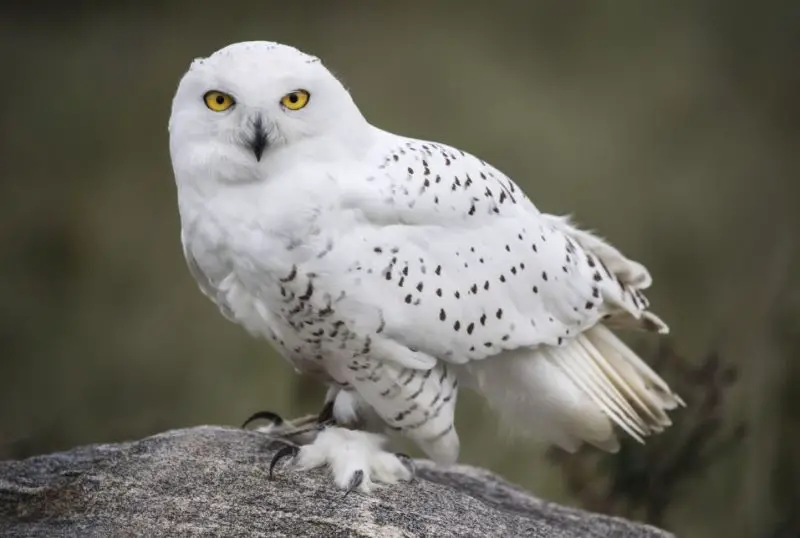
Snowy Owls (Bubo scandiacus) are large, powerful birds known for their striking white plumage, which helps them blend into their Arctic habitats. Males are usually whiter than females, who have more brown markings for better camouflage while nesting. These owls can grow over 20 inches in length and are known for their round heads, yellow eyes, and sharp talons. Unlike most owls, Snowy Owls are active during the day, especially in the continuous daylight of the Arctic summer.
Snowy Owls are native to the Arctic regions of North America, Europe, and Asia. They are highly migratory and travel south in winter to Canada, the Northern U.S., Scandinavia, and Northern Russia. They prefer open tundra and coastal regions but are also seen in prairies and agricultural fields during migration. Their diet mainly consists of lemmings and other small mammals. In some areas, they specialize in hunting a single prey species, showcasing their remarkable adaptability.
Northern Gannet
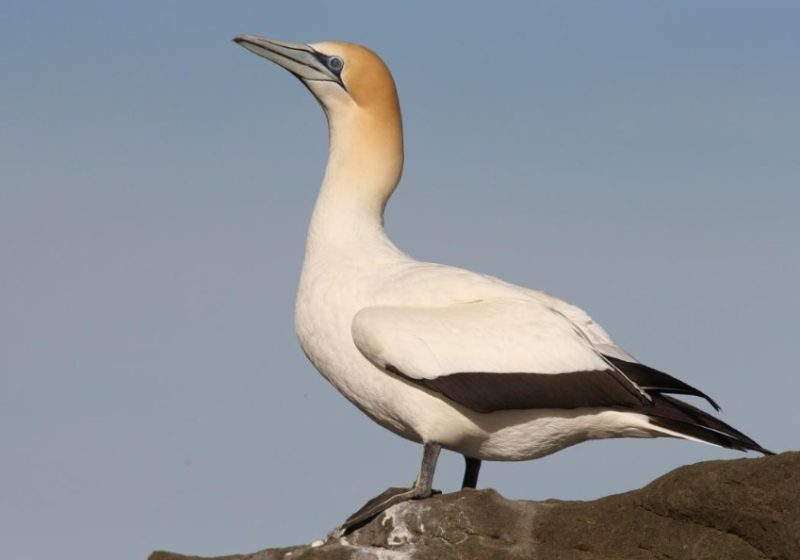
Northern Gannets (Morus bassanus) are large seabirds known for their striking white plumage with black wingtips and yellowish crowns during the breeding season. They are the largest gannets, reaching over 40 inches in length with wingspans exceeding 70 inches. These birds are expert divers, plunging into the ocean from great heights to catch fish. They have streamlined bodies and long, pointed bills designed for swift, precise hunting.
Northern Gannets are native to the North Atlantic, found along the coasts of Northern Europe and Northeastern North America. They breed in large colonies on steep coastal cliffs and isolated islands. During winter, they migrate south along the Atlantic coast. These birds are known for their loud, harsh calls and dramatic courtship displays. Their populations are stable, benefiting from protected breeding sites, although they are vulnerable to pollution and overfishing.
Ross’s Goose
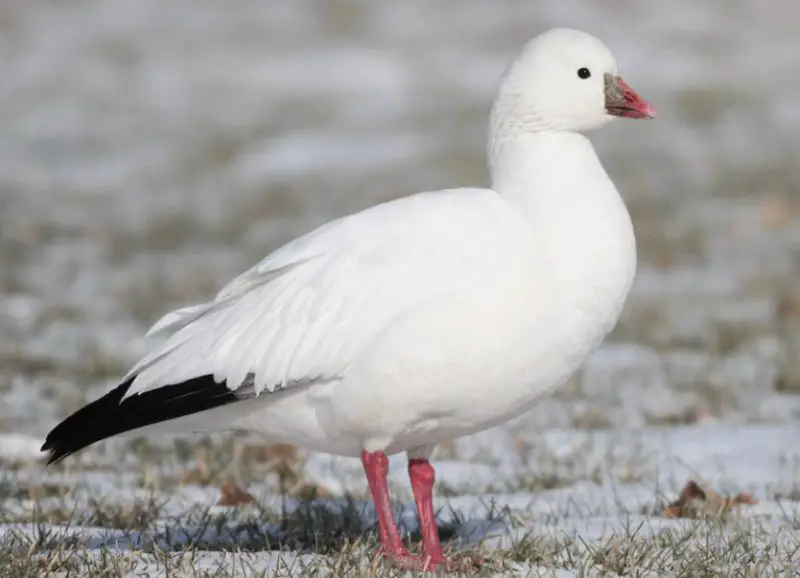
Ross’s Geese (Anser rossii) are small white geese native to the Arctic Tundra. They are similar in appearance to Snow Geese but are smaller, with shorter necks and more rounded heads. They have pink bills without the black “grinning patch” seen on Snow Geese. While they are primarily white, some rare gray morphs also exist. They are social birds, traveling in large flocks during migration.
These geese breed in the Central Arctic of Canada and migrate south to the United States and Northern Mexico for the winter. They prefer open flatlands and low-vegetation tundra during breeding. In winter, they are found in agricultural fields and wetlands. Their diet mainly consists of grasses, grains, and aquatic plants. Ross’s Geese populations are increasing due to their adaptability to agricultural habitats.
Whooping Crane
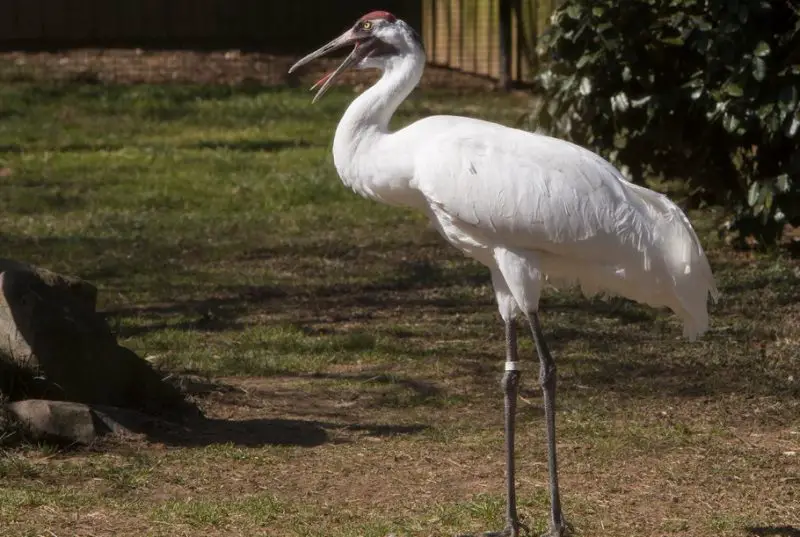
Whooping Cranes (Grus americana) are the tallest birds in North America, reaching heights of at least 4 feet. They have striking white plumage, black wingtips visible in flight, and red crowns with long, pointed orange beaks. These cranes are known for their graceful movements and loud, trumpeting calls. They are omnivorous, feeding on insects, snails, aquatic plants, and small vertebrates.
Whooping Cranes breed in Canada’s Northern Territories and migrate to Texas and the Gulf of Mexico for the winter. They inhabit wetlands, marshes, and coastal estuaries. These cranes were once on the brink of extinction but have made a remarkable recovery due to conservation efforts. They are still endangered, with limited populations in the wild. Their migration routes are carefully monitored to ensure their continued survival.
Willow Ptarmigan
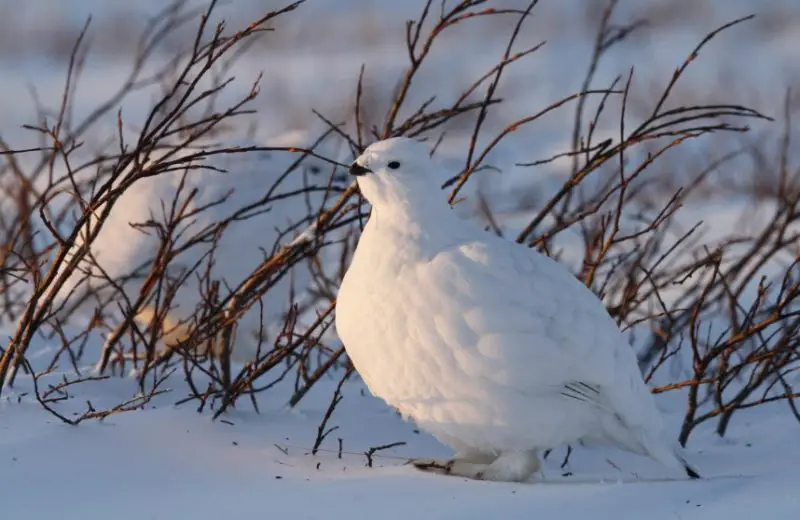
Willow Ptarmigans (Lagopus lagopus) are medium-sized birds known for their seasonal color changes. In winter, they are almost entirely white, blending in with the snowy Arctic landscape. During the breeding season, they develop brown plumage on their head, neck, and back for camouflage in the tundra. They have red eyes and black and white beaks, with feathered legs and feet to protect against the cold.
Native to Alaska and Northern Canada, Willow Ptarmigans live in Arctic tundra and subarctic shrublands. They are partially migratory, moving to lower elevations during winter. These birds feed on willow buds, twigs, leaves, and berries. Their white winter plumage provides excellent camouflage from predators like foxes and owls. Their ability to change color with the seasons makes them well-adapted to their harsh environment.
White Tern
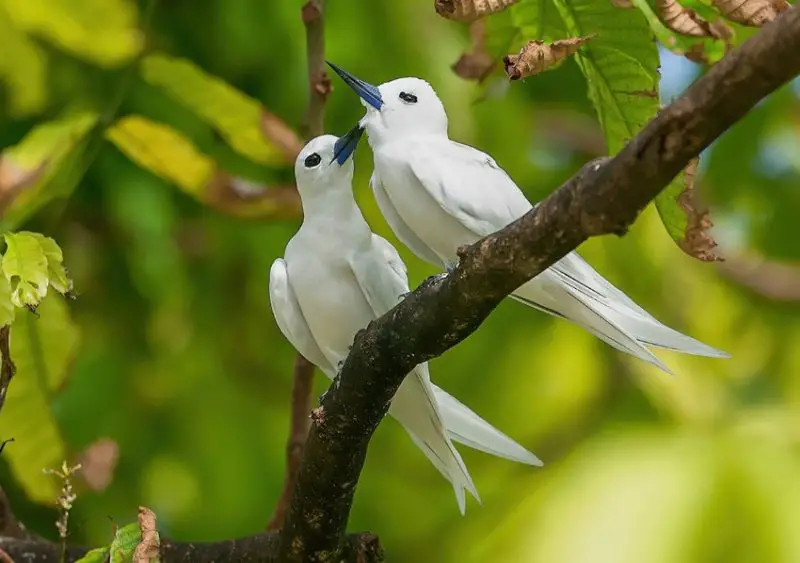
White Terns (Gygis alba) are delicate, medium-sized seabirds known for their completely white plumage and split white tails. Their black eyes stand out against their snowy feathers, giving them a striking appearance. Unlike many other birds, White Terns do not build nests; instead, they lay their eggs on bare branches or rocky ledges, relying on their eggs’ rough texture to keep them from rolling off.
These birds inhabit islands across the Indian and Pacific Oceans, from the East African coasts to Hawaii. They are non-migratory and are known to stay close to their island habitats year-round. White Terns feed on small fish and squid, which they catch by plunge diving. Historically, sailors used the presence of White Terns to navigate, as these birds typically remain close to land. Their populations are generally stable, although their eggs and chicks face threats from predators like giant turtles and invasive species.
Red-tailed Tropicbird
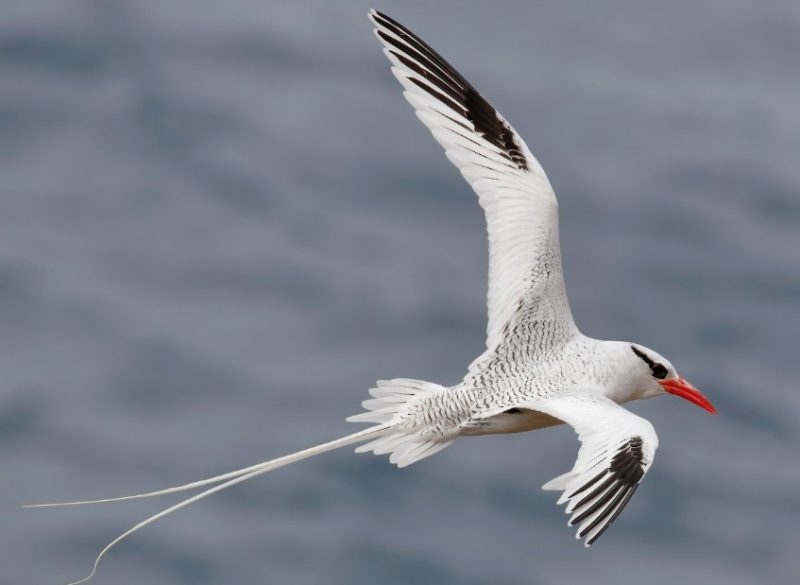
The Red-tailed Tropicbird (Phaethon rubricauda) is a graceful seabird with mostly white plumage, long red tail streamers, and an elongated red beak. It also has a distinctive black mask around its eyes. Known for its acrobatic flight patterns, this bird performs aerial displays during courtship, including flying in circles and even flying backward.
These birds are found across the Indian Ocean, Oceania, and the Pacific Ocean. They prefer nesting on isolated islands and coastal cliffs. Red-tailed Tropicbirds are partially migratory, traveling over vast ocean distances. Their diet mainly consists of flying fish and squid, which they catch by diving into the ocean from great heights. Despite their remote habitats, these birds face threats from introduced predators like rats and cats on breeding islands.
Rock Ptarmigan
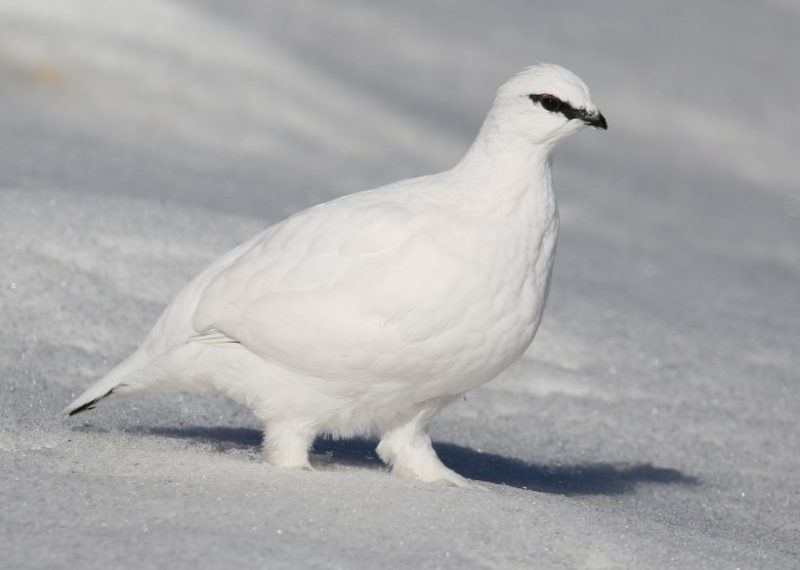
Rock Ptarmigans (Lagopus muta) are medium-sized birds native to the cold northern territories of North America, Europe, and Asia. They are known for their seasonal plumage changes, which provide excellent camouflage. In winter, they are almost entirely white with black tails, blending into the snowy landscape. In spring and summer, they molt to brown and gray to match the tundra vegetation.
These birds are found in Arctic and alpine tundras, favoring rocky slopes and low shrubs. They are partially migratory, moving to lower elevations in winter. Their diet varies by season, including berries, leaves, twigs, and insects. Rock Ptarmigans are highly adaptable and are well-camouflaged against predators like foxes and birds of prey. They are also known for their unique vocalizations, which are used during mating displays.
Little Egret
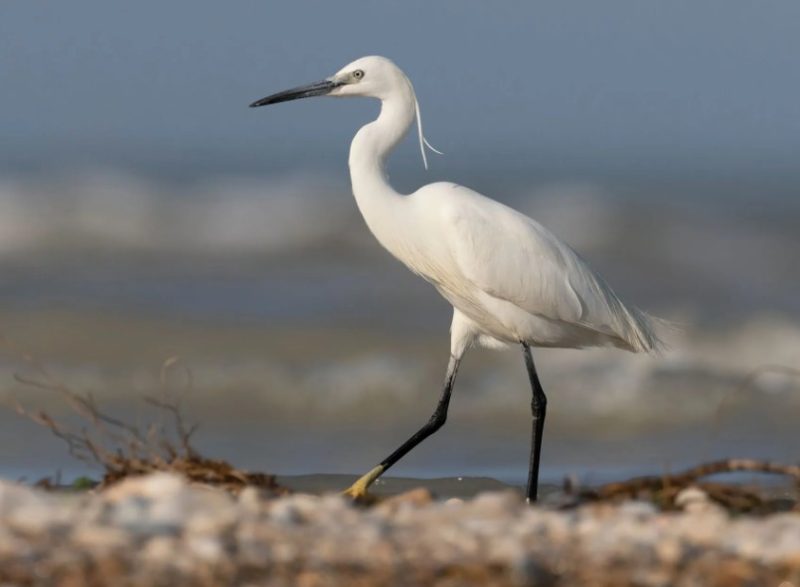
Little Egrets (Egretta garzetta) are elegant, medium-sized wading birds known for their slender, all-white bodies, black beaks, and black legs with yellow feet. They grow up to 26 inches in length and have double wingspans. During the breeding season, they develop long, delicate plumes on their heads and backs, enhancing their graceful appearance.
These birds are widely distributed across sub-Saharan Africa, Southern Asia, and Australia. They are also found in Europe during the spring and summer breeding season before migrating back to Northern Africa. Little Egrets are partially migratory, with some populations moving seasonally depending on food availability and climate. They inhabit wetlands, shallow lakes, and coastal areas, feeding on small fish, amphibians, and insects. Their populations are stable and even expanding in some regions due to their adaptability to changing environments.
Ivory Gull
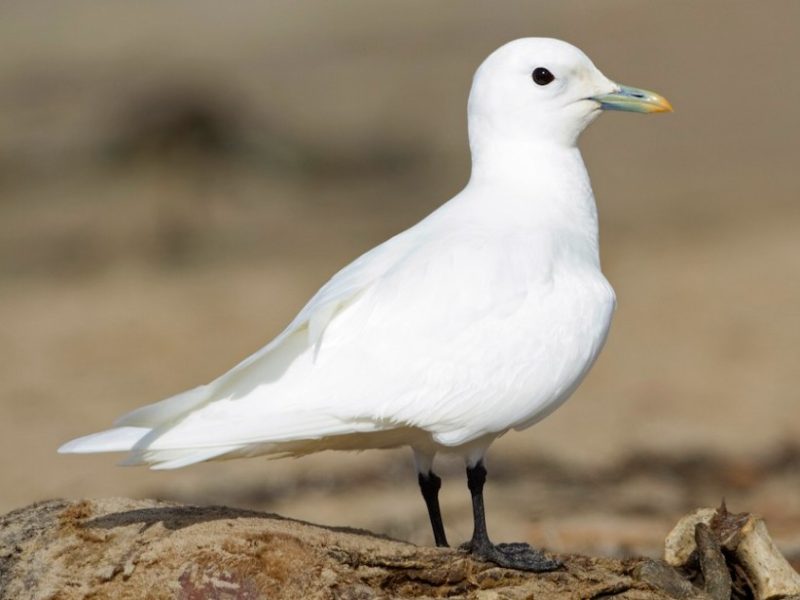
Ivory Gulls (Pagophila eburnea) are small, completely white seabirds native to the high Arctic regions. They have black legs and a contrasting black beak with a yellow tip. Their white plumage helps them blend into the snowy landscapes of the Arctic, providing camouflage against predators. They are opportunistic feeders, consuming fish, crustaceans, and even carrion, including the remains of polar bear kills.
These birds are found in the Canadian Arctic, Greenland, and Northern Scandinavia. They are highly migratory, traveling long distances over ice-covered seas. Ivory Gulls are known to follow polar bears and scavenge from their kills. They also nest on remote cliffs and rocky outcrops, where they are safe from most predators. However, their populations are declining due to habitat loss, pollution, and climate change. They are considered a vulnerable species, highlighting the need for continued conservation efforts.
Whooper Swan
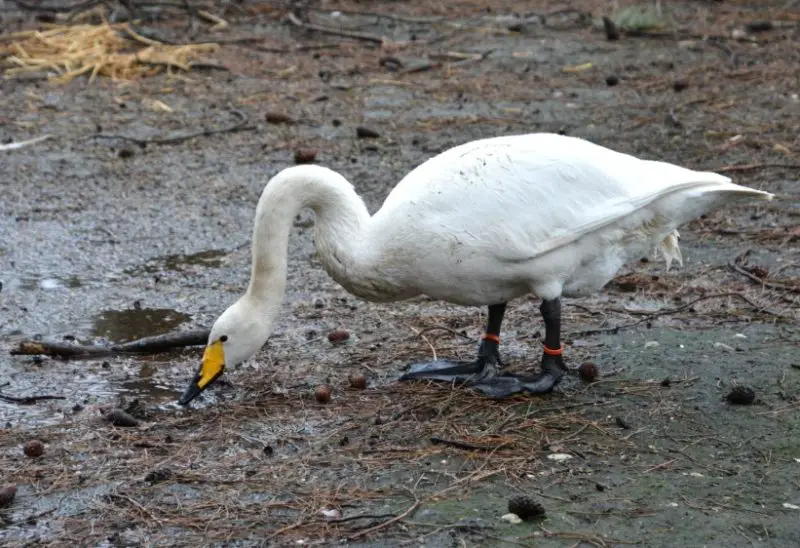
Whooper Swans (Cygnus cygnus) are among the largest and heaviest of the white birds, growing between 50 and 65 inches in length. They are known for their elongated heads and distinctive bright yellow and black beaks. These swans have a graceful all-white plumage that makes them easily recognizable.
Their natural habitat spans across Eurasia, with breeding grounds in Russia and Scandinavia and overwintering areas in Europe. These migratory birds travel vast distances between these regions, showcasing their remarkable flying abilities. Whooper Swans are known for their loud, trumpet-like calls, which are often heard during migration.
They inhabit shallow waters such as lakes, ponds, and coastal lagoons, feeding mainly on aquatic plants. After breeding, female Whooper Swans lay 3-4 pale yellow eggs. The species is noted for its strong pair bonds, often mating for life. Their populations are stable, but they face threats from habitat loss and environmental pollution.
Great Egret
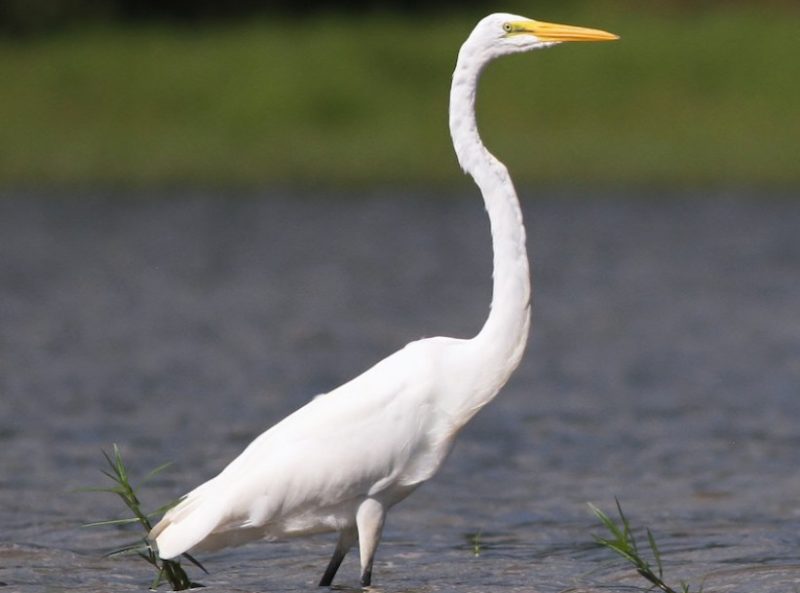
Great Egrets (Ardea alba) are known for their stunning all-white plumage, which stays white throughout the year. They are easily recognized by their long yellow bills and elegant necks. During the breeding season, some subspecies display green skin around their eyes. Standing tall with long black legs, these graceful birds are often seen wading through shallow waters. Their diet mainly includes fish and frogs, but they also consume amphibians and water snakes.
Great Egrets inhabit wetlands, marshes, and shorelines. They are widely distributed across Africa, South America, Europe, Asia, and North America. As migratory birds, they travel to warmer regions during colder months. They are often spotted in colonies with other wading birds, taking advantage of abundant food sources in their watery habitats.
Snowy Egret
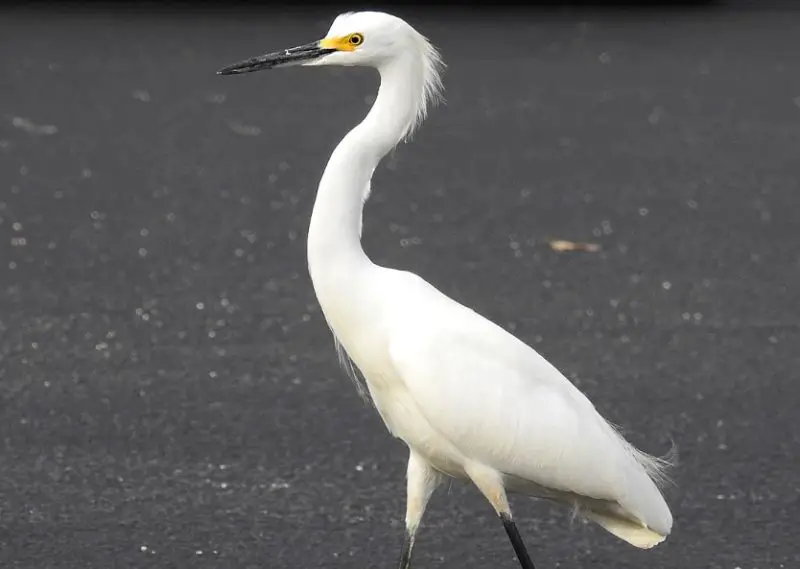
Snowy Egrets (Egretta thula) are known for their white plumage and elegant white crest. They are medium-sized birds, reaching up to 26 inches in height. Their distinctive yellow beak and long black legs with yellow feet make them easy to identify. Juvenile Snowy Egrets have greenish legs, which change color as they mature. Their diet consists of fish, snails, frogs, snakes, and crabs, which they catch in shallow water habitats.
Snowy Egrets live in wetlands, marshes, and coastal lagoons. They are commonly found around the Gulf of Mexico, Southwestern U.S., Central America, and South America. These birds are migratory, often traveling to warmer regions like Mexico and Central America during winter. They are social birds, frequently nesting in colonies with other wading species.
White Ibis
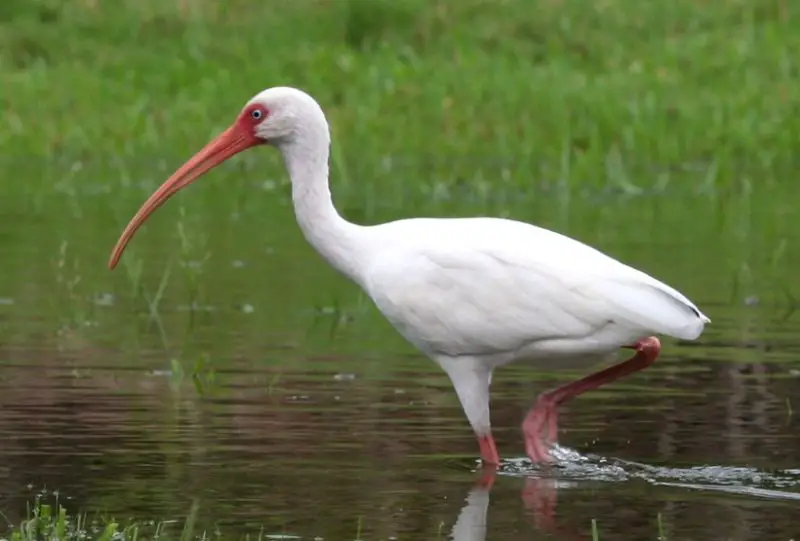
White Ibises (Eudocimus albus) are recognized by their white plumage and black wingtips, which are visible during flight. They have long, curved orange-red beaks used for probing mud for food. Males are slightly larger and have longer beaks than females. Adult White Ibises grow between 21 and 28 inches. They are often seen flying in V-shaped formations and feed on insects, crustaceans, and small aquatic creatures.
White Ibises inhabit coastal wetlands, marshes, and mangroves. They are commonly found around the Gulf of Mexico, Mexico, Cuba, Central America, Colombia, and Venezuela. These birds are migratory, moving to warmer climates when necessary. They are social creatures, living and foraging in large flocks, which enhances their feeding efficiency and protection from predators.
American White Pelican
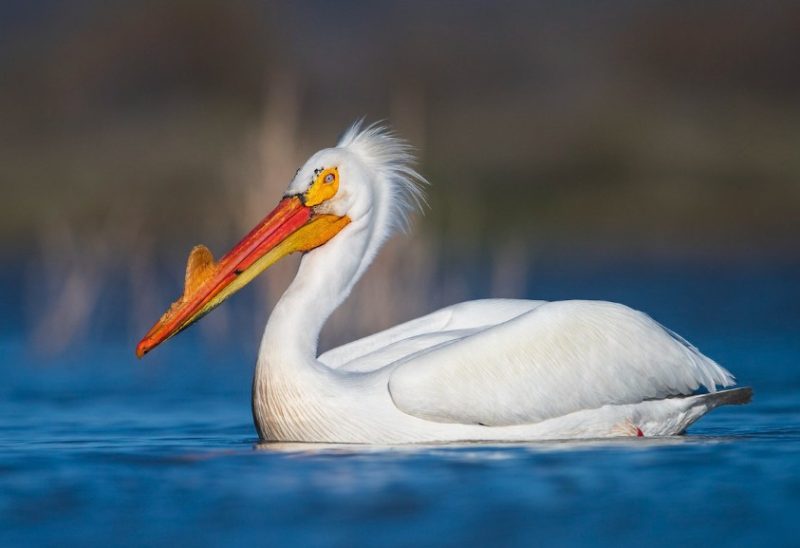
American White Pelicans (Pelecanus erythrorhynchos) are large water birds with mainly white plumage and contrasting black wingtips. They have a white crest and a long orange bill, which develops a bright orange patch around the base during the breeding season. These pelicans grow up to 14 inches in length and are known for their graceful flight patterns. They feed primarily on fish, including invasive species like carp.
American White Pelicans live near lakes, rivers, and coastal lagoons. They are found across Canada, the United States, and the Gulf of Mexico. These birds are migratory, moving to southern coastal areas during winter. They are skilled hunters, often working in groups to herd fish into shallow waters for easier feeding. Unlike other pelican species, they do not dive for fish but scoop them up while swimming.
Mute Swan
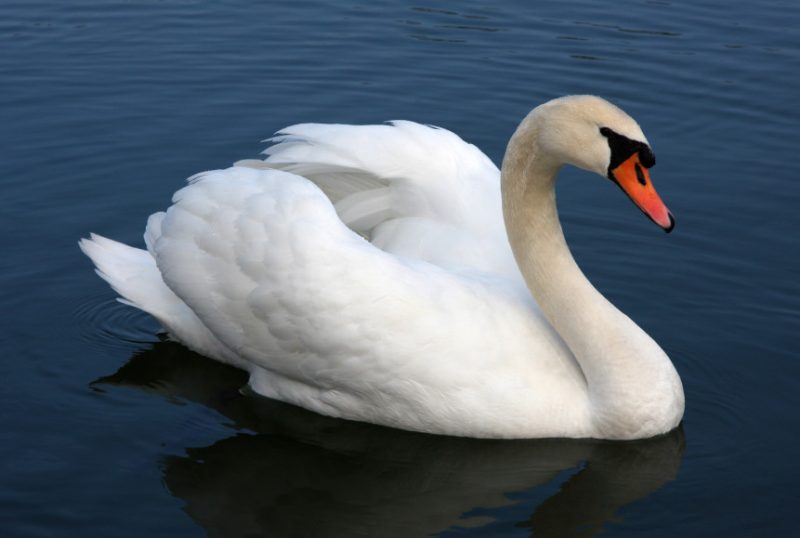
Mute Swans (Cygnus olor) are known for their graceful appearance, with pure white plumage, an orange bill, and a black face patch. They are large birds, growing between 50 and 63 inches in length. Despite their name, Mute Swans are not completely silent but are quieter than other swan species. They are often seen gliding elegantly on lakes and rivers.
Native to Europe and Asia, Mute Swans have been introduced to North America, where they sometimes behave invasively, displacing local waterfowl. They are partially migratory, moving to warmer areas during winter, although many populations remain in their breeding grounds year-round. These swans prefer calm, shallow waters and are known for their territorial behavior, especially during the nesting season.
Cattle Egret
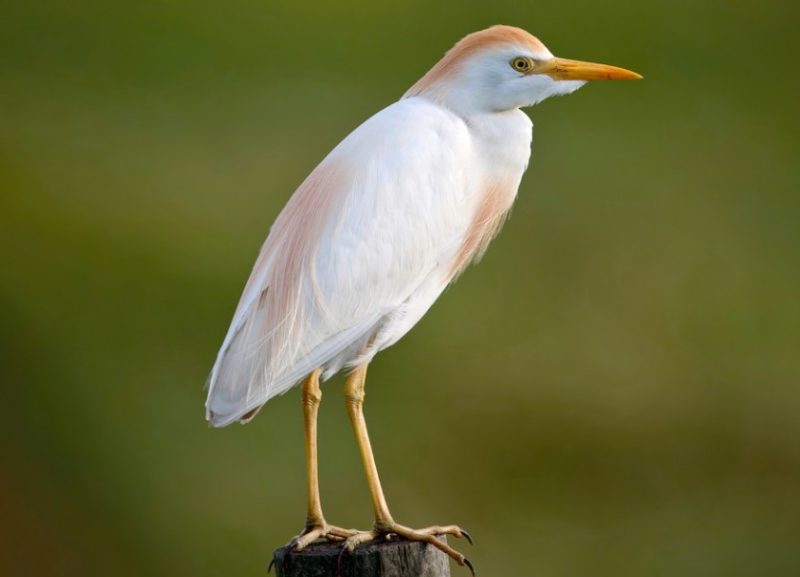
Cattle Egrets (Bubulcus ibis) are mostly white birds known for their orange-buff plumage during the breeding season. They are small and stocky compared to other egrets, with a short, thick neck and yellow bill. These birds are often seen following cattle and other grazing animals, feeding on insects stirred up by their movement. Their diet mainly consists of grasshoppers, flies, and other small invertebrates.
Originally native to Africa and South Asia, Cattle Egrets have spread to every continent except Antarctica. They thrive in open fields, farmlands, and grassy wetlands. As migratory birds, they move to warmer regions during winter. They are commonly found in South America, Africa, South Asia, Australia, and North America. Their adaptability and association with livestock have contributed to their successful global colonization.
Snow Goose
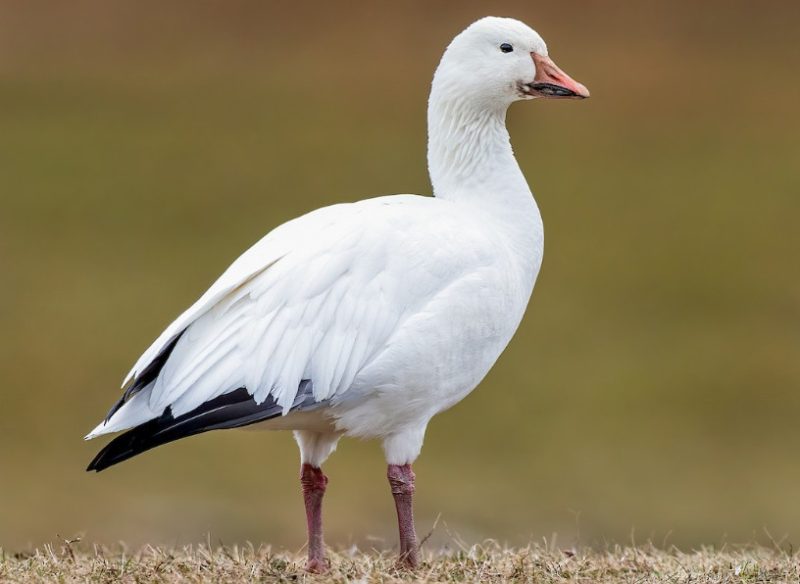
Snow Geese (Anser caerulescens) are mostly white with black wingtips, although a blue-gray morph also exists. These birds are medium to large in size, growing up to 31 inches. They have a stout pink bill with a distinctive black “grinning patch” along the sides. They are strong fliers, often migrating in large, noisy flocks that form V-shaped patterns. Their diet consists of grasses, grains, and aquatic plants.
Snow Geese breed in the Arctic regions of Canada and Alaska. During winter, they migrate south to the United States and the Gulf of Mexico. Some strays have been observed as far as Greenland and the United Kingdom. They prefer coastal marshes, agricultural fields, and wetlands. These birds are partially migratory and are known for their adaptability to different habitats, which has helped them maintain stable populations despite threats like disease outbreaks.
Wood Stork
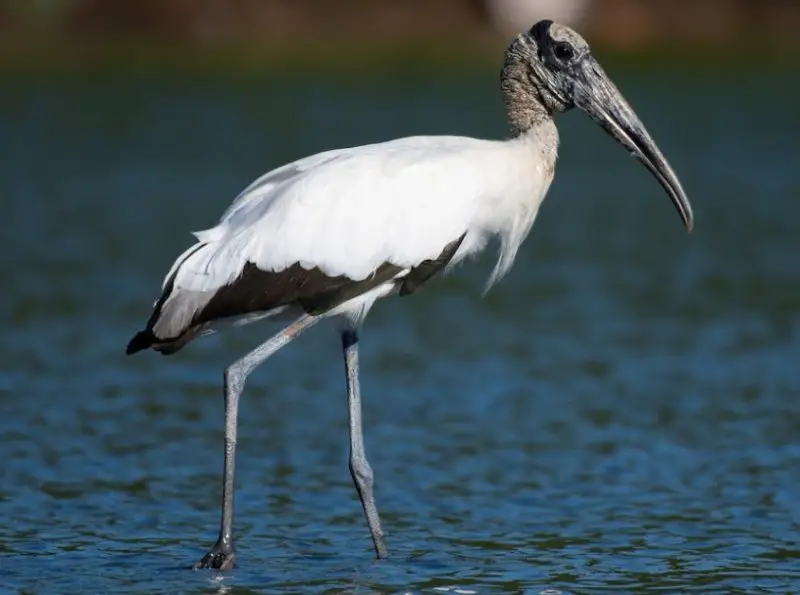
Wood Storks (Mycteria americana) have mostly white plumage with a dark neck and head, along with a long black or black-brown bill. They are large, long-legged wading birds known for their bald, scaly-looking heads. Wood Storks feed primarily on fish, amphibians, and invertebrates, catching prey by moving their open beaks through shallow water. Their feeding technique is known as “tactile foraging.”
They inhabit wetlands, swamps, and flooded lowlands in tropical and subtropical climates. Wood Storks are primarily found in South and Central America, as well as the Caribbean. In the U.S., they are mostly seen in Florida and the Southeastern states. They are partially migratory, moving northward during the breeding season. These birds rely on fluctuating water levels to concentrate fish in drying pools, making their feeding more efficient.
Trumpeter Swan
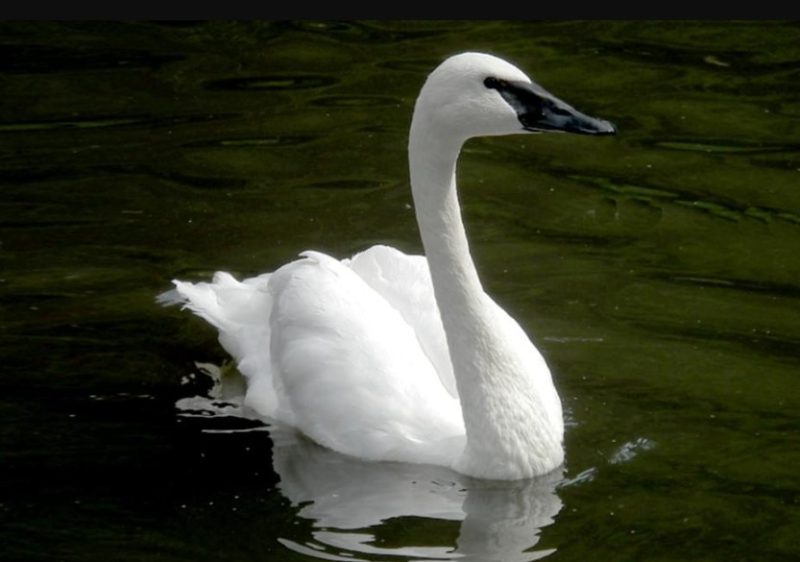
Trumpeter Swans (Cygnus buccinator) are the largest wild birds in North America, reaching lengths of 4 to 5 feet. They are mostly white with a black beak and a long neck, giving them an elegant appearance. Their powerful wings produce a distinctive trumpeting call, which can be heard over long distances. They feed on aquatic plants, insects, and small invertebrates.
Trumpeter Swans live in freshwater lakes, ponds, and marshes in North America. They are found in Northwestern regions, including Canada, Alaska, and the U.S. Pacific Coast. Some populations are migratory, moving to warmer regions like Montana during winter. Year-round populations can be found along the Rocky Mountains. These swans are known for their strong pair bonds and unique nesting behavior, where males build nests before courtship begins.
Salmon-crested Cockatoo
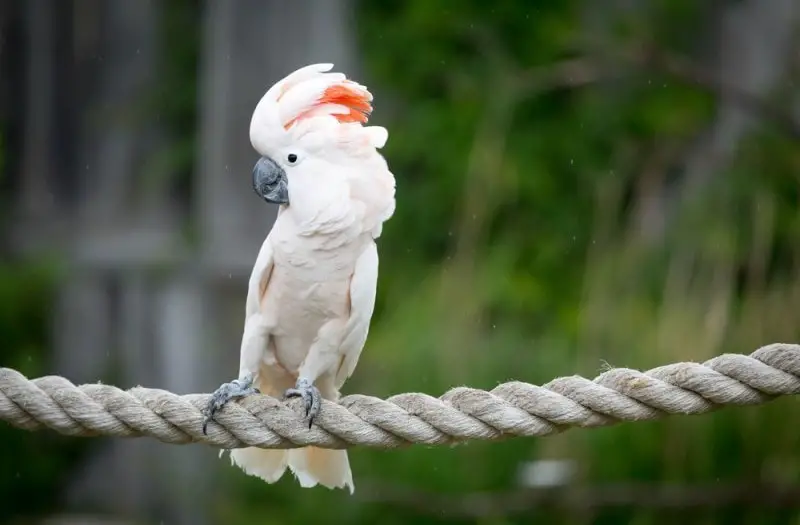
The Salmon-crested Cockatoo (Cacatua moluccensis), also known as the Moluccan Cockatoo, is a striking parrot native to Indonesia. It is easily identified by its mostly white plumage with a beautiful salmon-red crest that it raises when excited or alarmed. These large cockatoos can grow up to 20 inches in length.
They primarily feed on seeds, fruits, nuts, and berries. Known for their loud vocalizations, these cockatoos are among the most boisterous parrots in the world, making them challenging pets for inexperienced bird owners. However, they are highly intelligent and social birds, often forming strong bonds with their owners.
In the wild, Salmon-crested Cockatoos are native to the islands of Seram and surrounding areas in Indonesia. They are not migratory but may move locally in search of food. Due to habitat destruction and the illegal pet trade, they are listed as vulnerable. Conservation efforts are ongoing to protect their populations.
Greater Flamingo
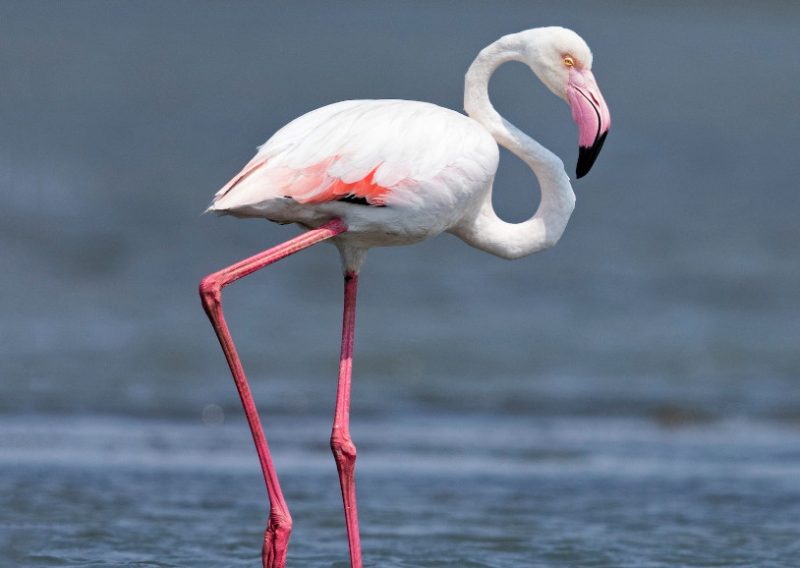
The Greater Flamingo (Phoenicopterus roseus) is one of the most recognizable wading birds in the world due to its elegant pink-white coloring. These birds have slender, curved necks, long legs, and distinctive pink plumage with salmon-pink legs. They can grow up to 59 inches tall, making them the largest of all flamingo species.
Greater Flamingos inhabit coastal lagoons, salt pans, and estuaries in warm climates across Africa, Europe, the Middle East, and Asia. They are non-migratory but may move locally depending on water levels and food availability. Their diet consists mainly of small shrimp, algae, and other microscopic organisms, which they filter from the water using their specialized beaks.
These social birds live in large colonies and are known for their synchronized group displays during mating rituals. They can live for several decades in the wild, with some individuals reaching up to 30 years. Their populations are stable, although they are vulnerable to habitat loss and environmental changes.
Sulphur-crested Cockatoo
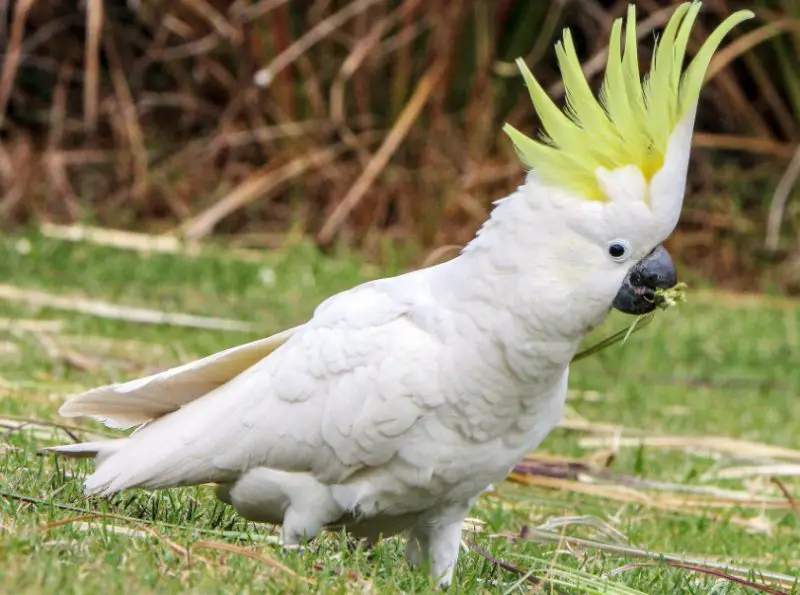
The Sulphur-crested Cockatoo (Cacatua galerita) is a large, white parrot native to Australia. It is easily recognized by its prominent upward-facing yellow crest, which it raises when alarmed or excited. These birds are highly social and intelligent, often seen in flocks in urban and rural areas across Australia.
They are known for their loud screeching calls and playful behavior. Sulphur-crested Cockatoos feed on a variety of foods, including seeds, nuts, berries, and cultivated crops, which sometimes leads to conflicts with farmers. They are known to be destructive chewers, using their powerful beaks to break branches or damage property.
These cockatoos are non-migratory but may move locally in search of food. In the wild, they can live up to 40 years, and in captivity, they can live even longer. Although they are protected in Australia, they are sometimes considered pests due to their habit of raiding crops. Despite this, their populations are stable and widespread.
Eurasian Spoonbill
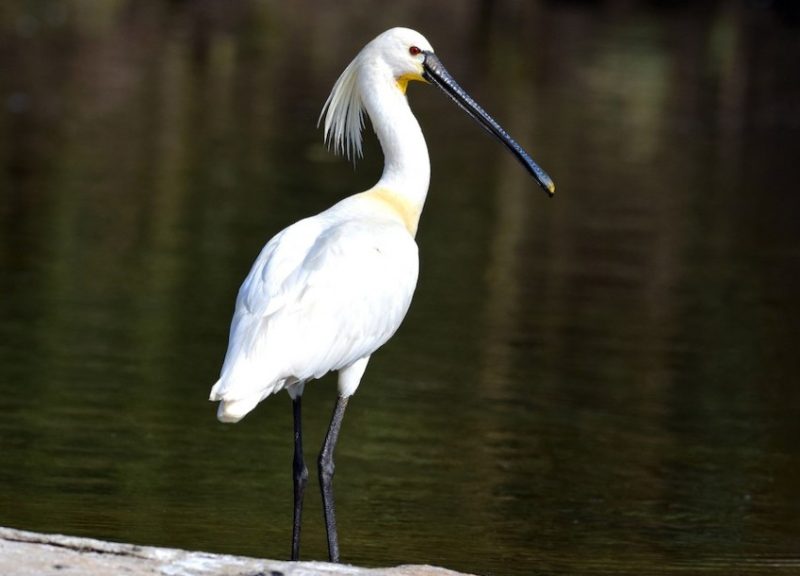
The Eurasian Spoonbill (Platalea leucorodia) is a large, wading bird known for its distinctive long, spoon-shaped bill, which it uses to filter-feed in shallow waters. It has a completely white body, a black bill with a yellow tip, and contrasting black legs. During the breeding season, adults develop long, elegant plumes on the back of their heads.
These birds are commonly found in coastal wetlands, marshes, and shallow lakes across Europe, Africa, and Asia. They are migratory, breeding in Europe and migrating to Africa for overwintering. Their diet is diverse, consisting of fish, crustaceans, insects, and aquatic plants. They feed by sweeping their bills side to side in the water to catch prey.
Eurasian Spoonbills are social birds that nest in colonies, often alongside other wading birds. They are generally silent but can be noisy during the breeding season. Their populations are stable, although habitat destruction and pollution pose threats to their breeding sites. Conservation efforts are in place to protect their wetland habitats.
Little Corella
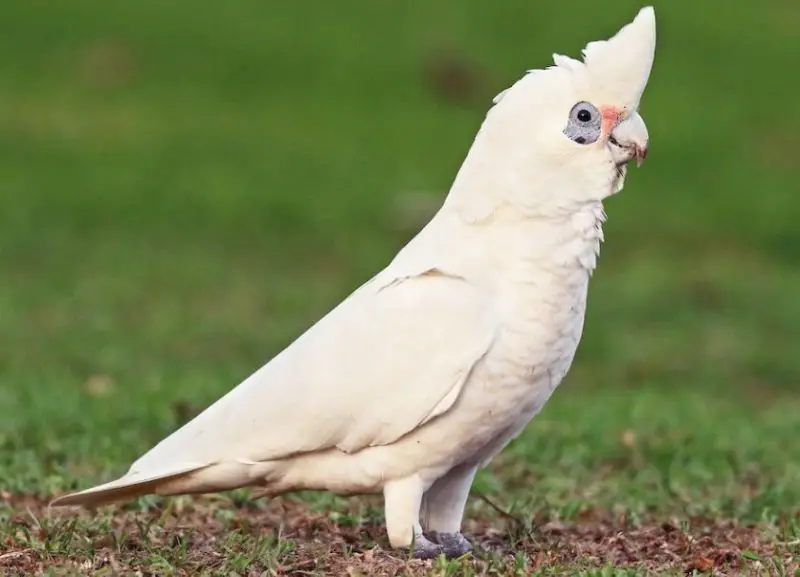
The Little Corella (Cacatua sanguinea) is a small, mostly white parrot reaching up to 16 inches in length. It is characterized by a short white crest and bright blue skin around its eyes. Known for its loud, high-pitched calls, this species is highly social and often seen in pairs or small flocks.
Endemic to New Guinea, Little Corellas are known to invade crops, especially cereal fields, leading to conflicts with farmers. They are highly adaptable and can also be found in urban areas. These parrots are known to nest in tree hollows, often returning to the same nesting site year after year.
There are four recognized subspecies, each adapted to different regions. Little Corellas hold cultural significance in some indigenous communities, with their feathers used in traditional ceremonies. They are non-migratory but may move locally in search of food. Despite being considered pests in some areas, their populations are stable.
Intermediate Egret
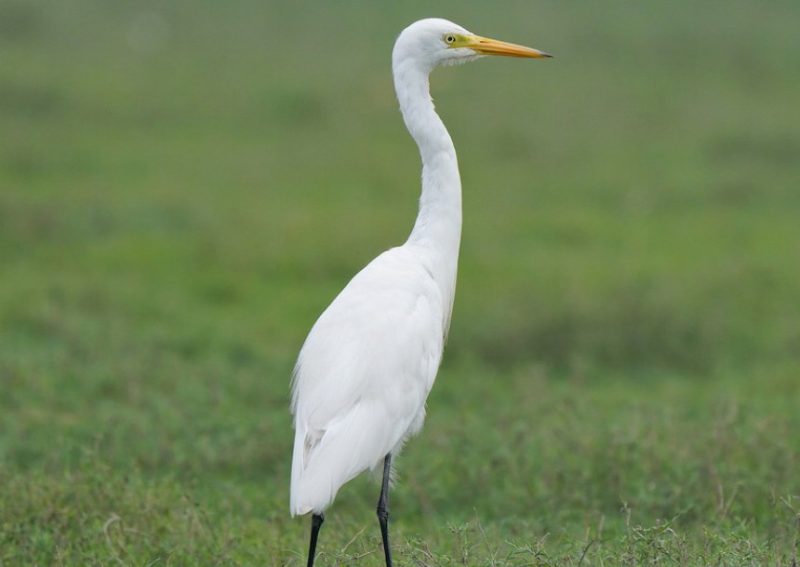
The Intermediate Egret (Ardea intermedia) is a medium-sized heron species known for its elegant white plumage and yellow beak. During the breeding season, its face displays blue skin patches. These birds are found in a wide range of habitats, including coastal wetlands, freshwater marshes, and flooded fields.
Their distribution spans West and East Africa, Southern Asia, and Australia. Some populations in Southeast Asia are partially migratory, moving to warmer regions to overwinter. Intermediate Egrets primarily feed on fish, insects, and small amphibians, often seen stalking prey in shallow waters.
They nest in colonies, usually in trees or reed beds, and the female lays a small number of pure white eggs. Despite habitat loss and environmental threats, their global population is currently stable.
Royal Spoonbill
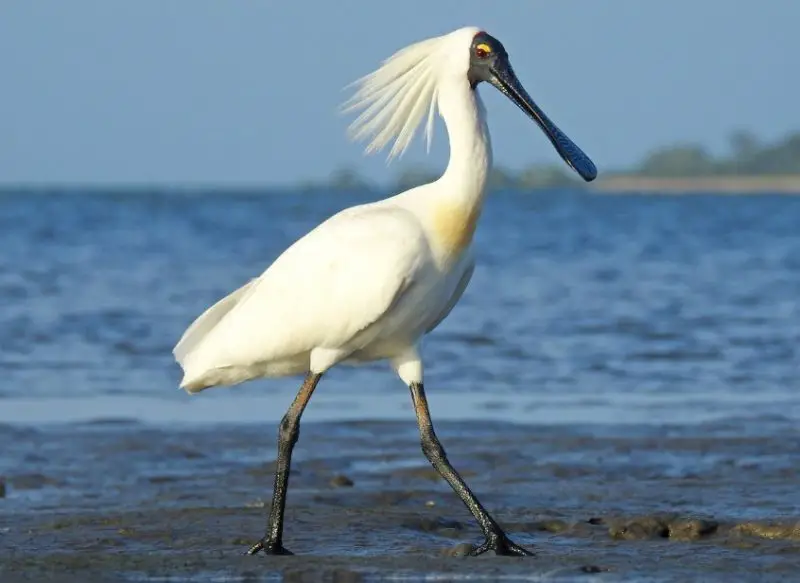
The Royal Spoonbill (Platalea regia) is a striking white bird named for its distinctive long, spoon-shaped black bill, which is wider at the tip. This unique bill helps them to feed by sweeping it through shallow water to catch small fish, crustaceans, and insects.
They grow up to 30 inches and are predominantly found in Australia, with smaller populations in New Guinea, New Zealand, and New Caledonia. Royal Spoonbills are non-migratory but may move locally depending on water availability and food resources.
During the breeding season, adults develop long white plumes at the back of their heads, giving them a regal appearance. They nest in colonies, often in trees over water, and the female lays 2-4 eggs. Their population is stable, but habitat loss poses a potential threat.
Great White Pelican
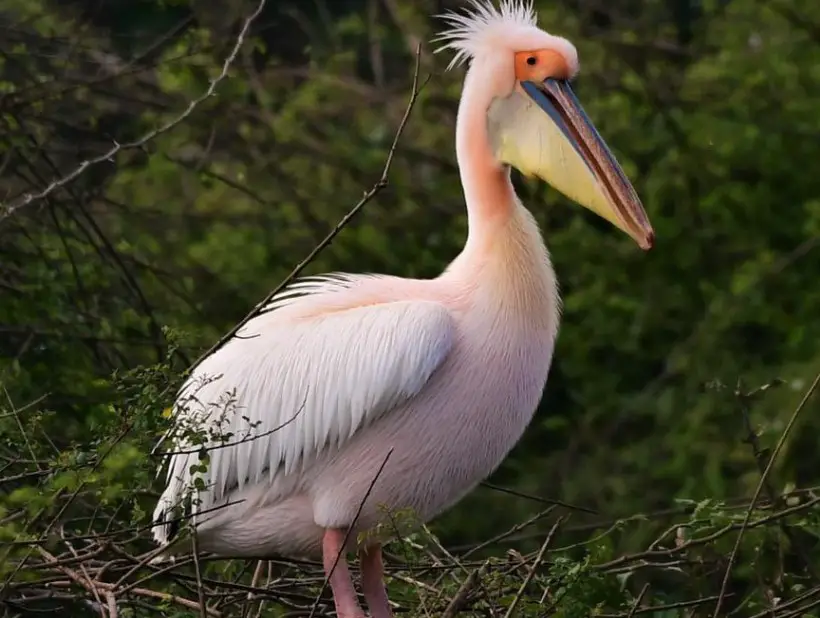
Great White Pelicans (Pelecanus onocrotalus) are among the largest white birds in the world, growing up to 71 inches in length. They are easily recognized by their expansive wingspan and long, wide yellow beaks with large throat pouches for catching fish.
Their plumage is predominantly white, but their wings are accented with gray, dark gray, or black. Juvenile pelicans are darker, displaying shades of gray. They are highly social birds, often seen flying in V-shaped formations during long migrations.
Native to Eurasia, they inhabit areas around the Black Sea, Caspian Sea, Adriatic Sea, and parts of the Mediterranean. During winter, they migrate to Northeastern Africa and sub-Saharan Africa. Their collective migrations cover long distances, with some traveling as far as South Africa.
Great White Pelicans primarily feed on fish, hunting in groups by driving fish into shallow waters. Their populations are generally stable, but they face threats from habitat degradation and pollution.
Coscoroba Swan
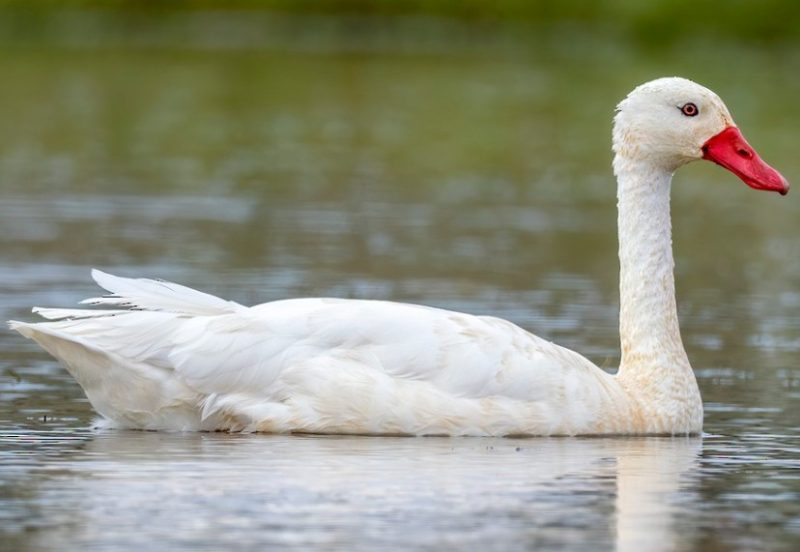
The Coscoroba Swan (Coscoroba coscoroba) is a unique species native to South America, distinguished by its all-white plumage and bright red beak, which is wider at the tip. Growing just over 40 inches, it is the smallest swan species but maintains an elegant and graceful appearance.
These swans inhabit coastal areas, freshwater lagoons, and temporary water sources. Their distribution includes Brazil, Chile, Argentina, Uruguay, and the Falkland Islands. They are partially migratory, with some populations migrating to Argentina or Chile for overwintering, while others remain in their habitats year-round.
Coscoroba Swans have a varied diet, feeding on aquatic plants, dryland vegetation, small fish, and insects. They are known for their vocalizations, which are musical and flute-like. Nesting occurs in dense vegetation near water, where females lay 4-6 eggs.
Their population is stable, but habitat loss and hunting pose risks. Conservation measures are in place to protect their breeding grounds.
Long-billed Corella
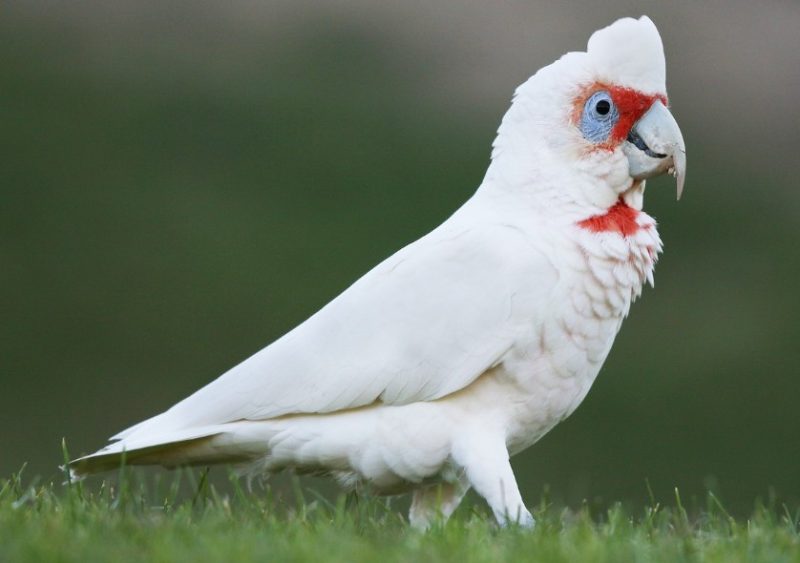
The Long-billed Corella (Cacatua tenuirostris) is a mostly white parrot native to Australia, known for its distinctive long, curved beak and pinkish-red markings around its eyes and neck, especially visible during the breeding season. These birds are highly intelligent and are among the best mimics in the parrot world, able to imitate human speech with remarkable clarity.
In their native habitats, Long-billed Corellas are often seen in flocks, feeding on seeds, nuts, and roots. They are also known to invade crops, leading to conflicts with farmers. Their strong beaks can cause significant damage, even to power lines, which has resulted in some being viewed as pests.
Despite this, they are popular as pets due to their playful nature and vocal abilities. They are non-migratory but may move locally in search of food and water. Conservation status is currently stable, but habitat loss and human-wildlife conflict pose challenges.
Little Blue Heron
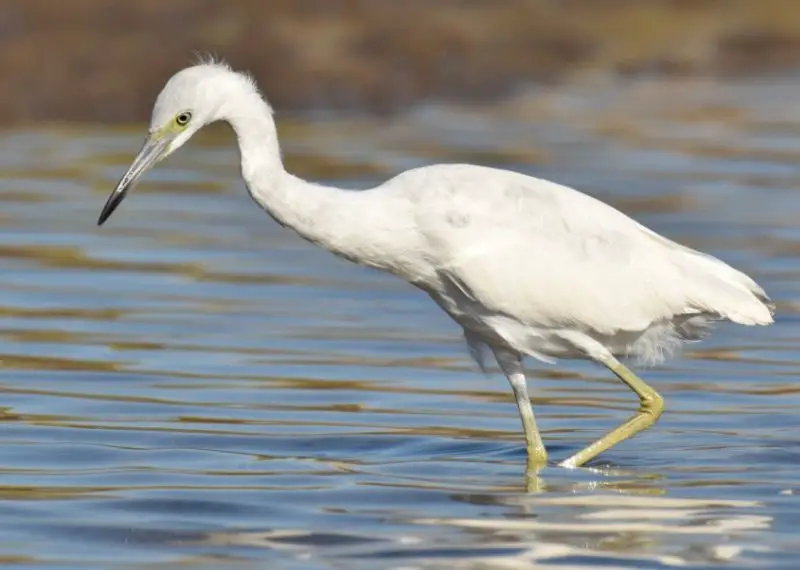
The Little Blue Heron (Egretta caerulea) is a medium-sized wading bird found in the Americas. Interestingly, juveniles are completely white, gradually transitioning to a slate-blue color as they mature. This unique color change serves as a camouflage strategy, allowing juveniles to blend in with Snowy Egrets, reducing aggression from adults.
They inhabit wetlands, marshes, and coastal areas, feeding primarily on small fish, insects, and crustaceans. Little Blue Herons are known for their slow and deliberate movements, stalking prey in shallow water with remarkable patience.
They are partially migratory, with populations in North America migrating to tropical and subtropical regions of Central America for the winter. In contrast, South American populations are largely sedentary. While their population is stable, habitat destruction remains a concern.
Kelp Goose
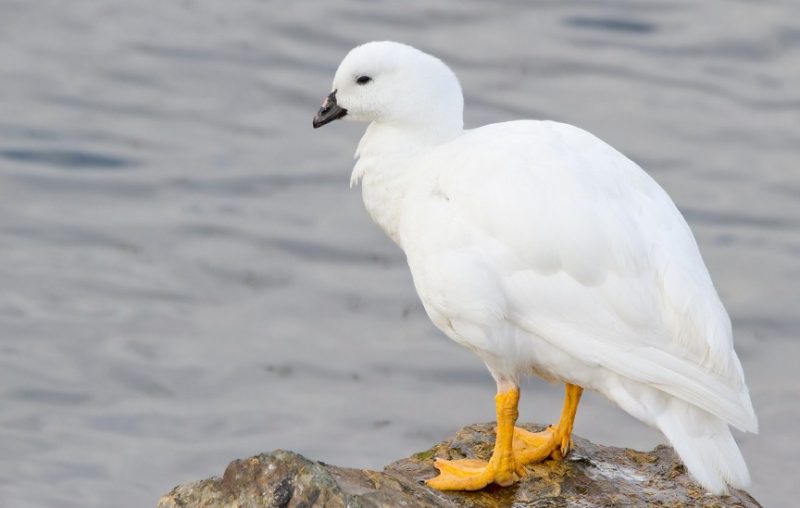
The Kelp Goose (Chloephaga hybrida) is a striking species of goose native to the remote coastal areas of Southern Chile and Argentina. Males are entirely white, while females are dark with a black back and gray-white underbelly, creating a stark contrast between the sexes. Both genders share a black beak.
They are typically found along rocky shorelines, feeding almost exclusively on kelp and other marine algae. Their specialized diet allows them to inhabit harsh coastal environments where few other birds can thrive.
Kelp Geese are non-migratory but may move locally within their range. They are monogamous and often seen in pairs, with both parents sharing responsibilities in raising their young. Their population is stable due to their remote habitat, which protects them from human disturbances.
Snowy Sheathbill
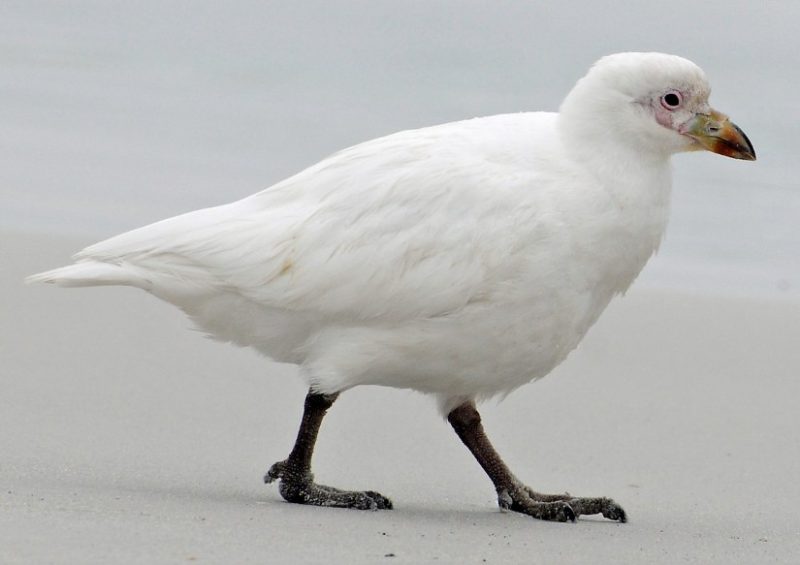
The Snowy Sheathbill (Chionis albus) is the only land bird native to Antarctica. It is completely white with a unique, fleshy, sheath-like covering at the base of its beak, giving it a distinct appearance. These birds are opportunistic scavengers, feeding on anything they find, including insects, carrion, and even the eggs and chicks of other seabirds.
They are highly adaptable and spend much of their time on the ground, foraging near penguin colonies and seal rookeries. Despite being able to fly, Snowy Sheathbills are more often seen walking or running.
During the winter, they migrate to the coastlines of South America. Their survival depends on their ability to exploit a wide variety of food sources. While not currently threatened, climate change and human activity in Antarctica could impact their populations in the future.
African Spoonbill
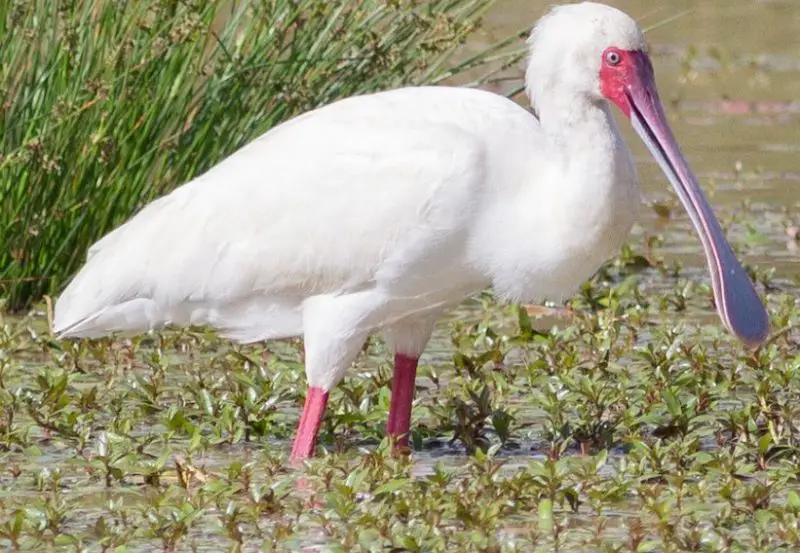
The African Spoonbill (Platalea alba) is a distinctive wading bird with completely white plumage, vivid red facial skin, long red legs, and a spoon-shaped bill that widens at the tip. This bill helps them catch small fish, amphibians, reptiles, and crustaceans by sweeping it side-to-side in shallow waters.
They inhabit wetlands, marshes, and temporary water bodies across sub-Saharan Africa, including Madagascar, Kenya, and Namibia. African Spoonbills are social birds, often seen feeding and nesting in colonies alongside other wading birds.
They are migratory, moving locally in response to rainfall and water availability. Nesting occurs in trees or reed beds, and the female typically lays 3-5 eggs. While their population is generally stable, they face threats from habitat loss and water pollution. Conservation efforts focus on protecting their wetland habitats.
White-tailed Ptarmigan
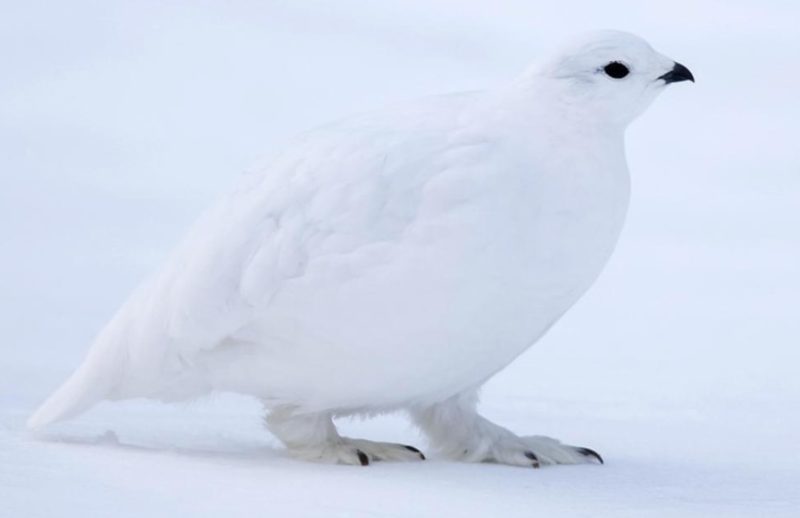
The White-tailed Ptarmigan (Lagopus leucura) is a small, ground-dwelling bird known for its remarkable seasonal plumage changes. During winter, it is completely white, allowing it to blend seamlessly into snowy environments, providing excellent camouflage against predators. However, as the breeding season approaches, its plumage darkens to a mix of brown and gray, with white speckles, while the underbelly remains white. Males generally exhibit extra brown feathers around the crown compared to females.
This bird is adapted to cold, alpine habitats and is found in mountainous regions of Southern Alaska and Northwestern Canada. It feeds on a variety of vegetation, including willow buds and berries, and its feathered feet help it walk on snow.
White-tailed Ptarmigans are migratory, moving to lower elevations during the harshest winter months. Despite their harsh habitats, their population is stable, but climate change poses a potential threat by altering their specialized environments.
Yellow-crested Cockatoo
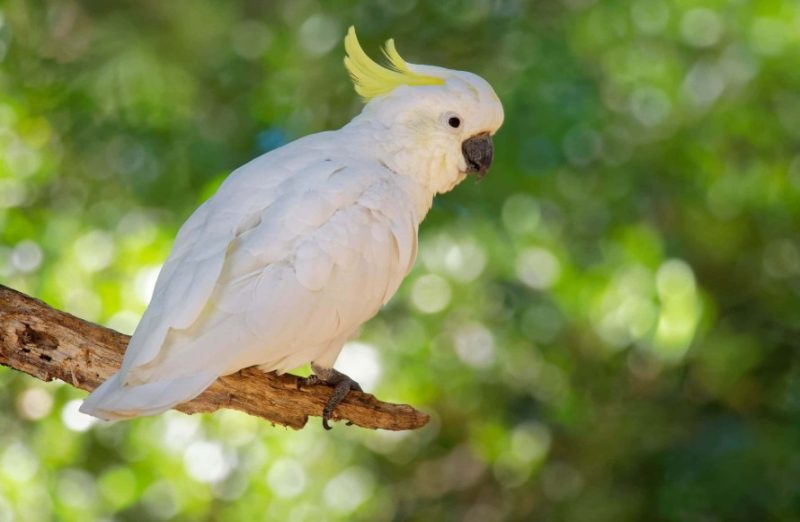
The Yellow-crested Cockatoo (Cacatua sulphurea) is a striking white parrot with a vibrant yellow crest, native to Indonesia, Timor, and the Tanimbar Islands. Its mostly white plumage is accented by yellow cheeks during the breeding season, giving it a charming appearance.
Highly intelligent and social, these cockatoos are popular as pets due to their playful nature and vocal abilities. However, their popularity in the pet trade has contributed to severe population declines in the wild, leading to their classification as critically endangered.
They inhabit forested areas and feed on seeds, nuts, and fruits. Non-migratory by nature, they live in small flocks and are known for their loud, distinctive calls. Conservation efforts are underway to protect their dwindling wild populations, focusing on habitat preservation and reducing illegal trade.
Tanimbar Corella
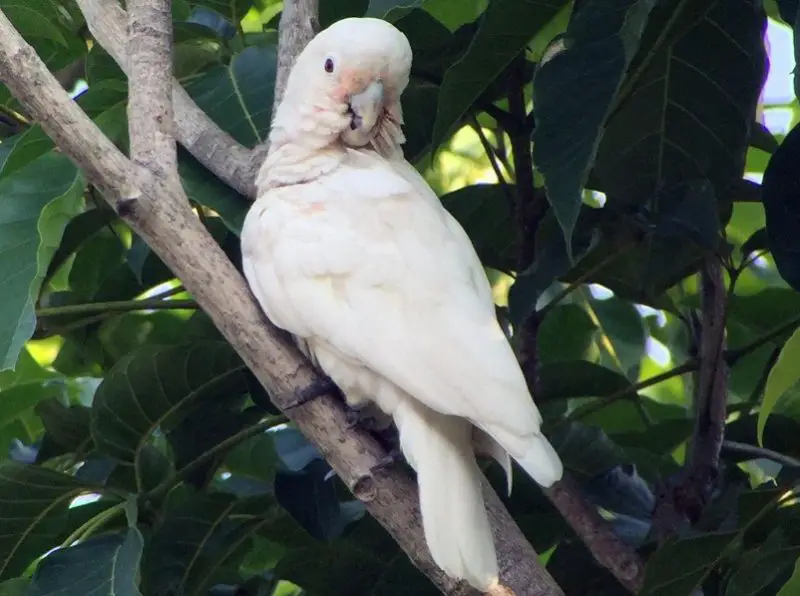
The Tanimbar Corella (Cacatua goffiniana) is a small white parrot native to the Tanimbar Islands of Indonesia. It is characterized by its white plumage with a pinkish hue around the beak and face, giving it a gentle and endearing appearance. Juveniles share similar coloring with expressive black and white eyes.
These corellas are highly intelligent and social, known for their playful antics and ability to mimic sounds, making them popular pets worldwide. In the wild, they live in flocks and feed on seeds, fruits, and insects.
Despite their small native range, they are adaptable and have stable populations, partly due to their popularity in captivity. They are non-migratory but may move locally in search of food. Conservation efforts focus on protecting their natural habitats.
Black-faced Spoonbill
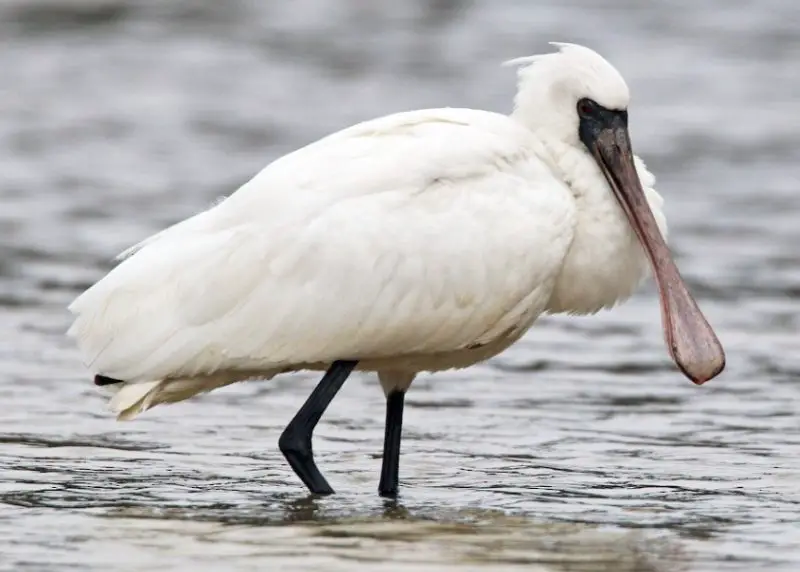
The Black-faced Spoonbill (Platalea minor) is one of the rarest and most endangered white birds in the world, with an estimated population of only a few hundred individuals. It has striking white plumage, a black face, and a spoon-shaped bill that widens at the tip. Its legs are black, and a yellow patch is sometimes visible on the upper chest.
These birds are migratory, breeding in northeastern China and the Korean Peninsula before migrating to overwinter in Southeast Asia, including the Philippines and Thailand. They inhabit coastal wetlands and estuaries, feeding on small fish, crustaceans, and aquatic insects by sweeping their spoon-shaped bills in shallow waters.
Due to habitat loss and pollution, their populations have declined drastically. Conservation programs are in place, including protected areas in China and international cooperation to safeguard their migratory routes.
Yellow-billed Spoonbill
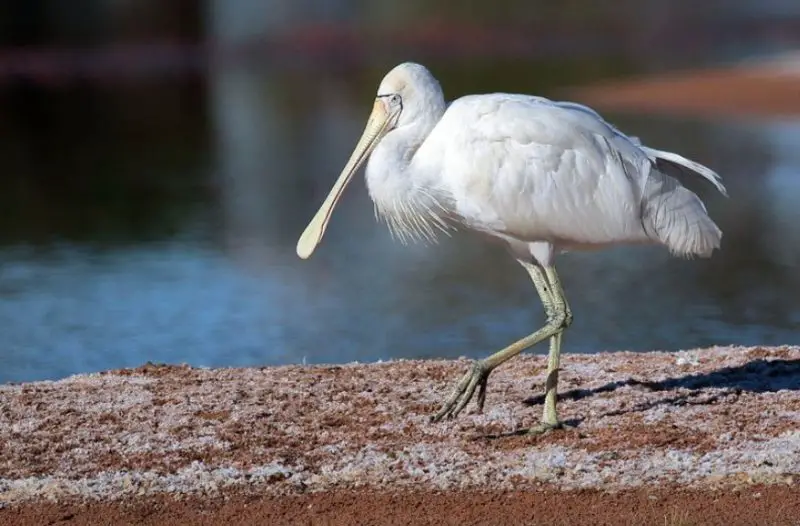
The Yellow-billed Spoonbill (Platalea flavipes) is a large, elegant bird native to Australia and New Zealand. It is known for its completely white plumage and long yellow spoon-shaped bill, which it uses to feed by sweeping side-to-side in shallow waters.
These birds inhabit wetlands, marshes, and coastal areas, feeding on fish, crustaceans, and aquatic insects. They are solitary feeders but nest in colonies, often alongside other wading birds.
Yellow-billed Spoonbills are non-migratory but may move locally depending on water availability. Their population is currently stable, although habitat destruction and water pollution pose risks. Conservation efforts focus on preserving wetland habitats.
Jabiru
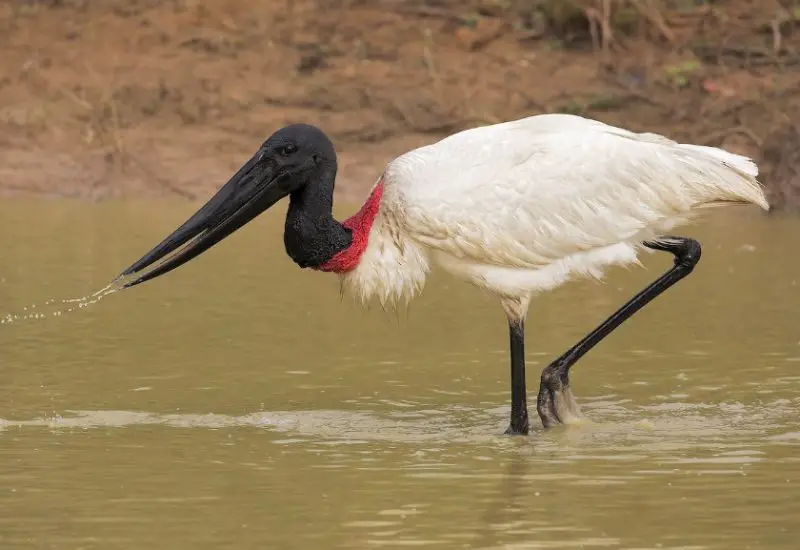
The Jabiru (Jabiru mycteria) is the tallest flying bird in South and Central America, known for its striking appearance. It has a white body, black head and neck, and a contrasting bright red throat. Its long, heavy black bill is perfectly adapted for catching fish, snails, and amphibians in shallow waters.
These storks are found near rivers, lakes, and wetlands in countries like Brazil, Paraguay, Bolivia, Ecuador, Venezuela, and Panama. They are solitary birds, rarely forming large flocks, and are known for building large nests high up in trees.
Jabirus are non-migratory, but some local movements occur in response to seasonal water changes. Their populations are currently stable, but habitat loss and water pollution are potential threats. Conservation efforts include protecting wetlands and ensuring sustainable water management practices.

